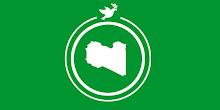video courtesy of mackdv1st
Mackdv1st`s Channel., Oct., 6 2011
In 1969, the British Special Air Service (S.A.S.) was contacted by the Libyan Royal Family and planned an assassination attempt to restore the Libyan monarchy. The plan was dubbed the "Hilton Assignment", named after a Libyan jail. The plan was to release 150 political prisoners from a jail in Tripoli as a catalyst for a general uprising. The prisoners would be recruited for a coup attempt, and the British agents would leave them to take over the nation. The plan was called off at a late stage by the British Secret Intelligence Service because the United States government decided that Gaddafi was anti-Marxist and therefore acceptable.
In 1976, Tunisia's state television reported that Gaddafi had been fired at by a lone assailant. None of the shots hit him. In 1981, French president Valéry Giscard d'Estaing plotted an assassination attempt with Egypt. His administration spoke with the Reagan administration for approval, but the United States did not support the measure. The plot was abandoned after Giscard's term in office.
In 1986, the United States bombed Libya, including Gaddafi's family compound in the vast Bab al-Azizia Barracks in southern Tripoli. The U.S. Government consistently said that the bombings were "surgical strikes" and were not intended to kill Gaddafi. However, Oliver North did devise a plot at the time to lure Gaddafi into his compound using Terry Waite. The plot violated US law, which prohibited assassinations, and was never put into action. On 15 April, Gaddafi and his family had fled his compound in the Bab al-Azizia Barracks moments before it was bombed. He received a phone call the night of 15 April, warning him about an attack. The origin of the phone call remains under speculation, but Maltese Prime Minister Karmenu Mifsud Bonnici and Italian politician Bettino Craxi have been primary suspects.
In 1993, over 2,000 Libyan soldiers plotted to assassinate Gaddafi. The soldiers were members of the Warfalla tribe, which rebelled because it was not well-represented in the upper ranks of the Libyan Army. The coup attempt was crushed by the Libyan Air Force, which was entirely made of members of the Qadhadhfa tribe, which Gaddafi belongs to. The tribal tensions that resulted with the Warfalla and the Magariha caused Gaddafi to place his second-in-command, Abdessalam Jalloud, a Magariha, under house arrest, and led to oppression of the Warfalla. The rebellion was largest in the city of Misrata. Libyan media did not cover any reports on the rebellion, but European diplomats saw large numbers of wounded and casualties in the hospitals. * In February 1996, Islamic extremists attacked Gaddafi's motorcade near the city of Sirte. Allegedly, Britain's Secret Intelligence Service was involved, which was denied by future foreign secretary Robin Cook. The Foreign and Commonwealth Office later stated: "We have never denied that we knew of plots against Gaddafi."
In August 1998, former British MI5 officer David Shayler renewed his attacks on the secret services, claiming that MI6 had invested GB£100,000 in a plot to assassinate Gaddafi. In June 1998, Islamic militants opened fire on Gaddafi's motorcade near the town of Dirnah. One of his Amazonian female Guards sacrificed herself to save his life. He was injured in the elbow according to witnesses.




















































































































No comments:
Post a Comment